 Last additions - Nara city 奈良市 Last additions - Nara city 奈良市 |
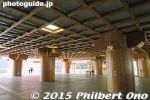
JR Nara StationOct 06, 2018
|
|
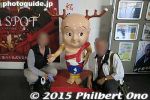
Sento-kun mascotOct 06, 2018
|
|
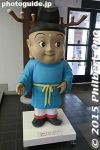
Sento-kun mascotOct 06, 2018
|
|
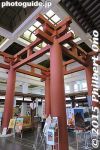
Inside former Nara Station.Oct 06, 2018
|
|
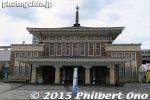
Former JR Nara Station is used as a tourist facility.Oct 06, 2018
|
|
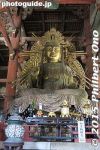
Oct 06, 2018
|
|
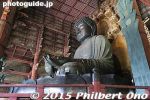
Oct 06, 2018
|
|

Oct 06, 2018
|
|
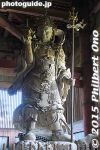
Oct 06, 2018
|
|
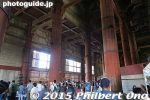
Oct 06, 2018
|
|
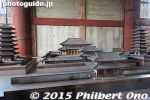
Scale model of the old Todaiji Temple.Oct 06, 2018
|
|
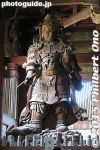
Oct 06, 2018
|
|
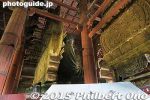
Oct 06, 2018
|
|
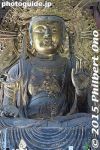
Oct 06, 2018
|
|

Oct 06, 2018
|
|
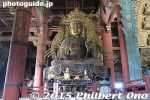
Oct 06, 2018
|
|
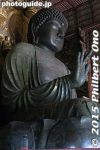
Great Buddha, Todaiji Temple, Nara. The height of the ear is 254 cm.Oct 06, 2018
|
|
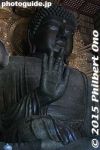
Oct 06, 2018
|
|

Todaiji's Great Buddha was built by Emperor Shomu (聖武天皇) 1,200 years ago to pray for the happiness of all people.Oct 06, 2018
|
|
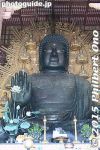
Oct 06, 2018
|
|
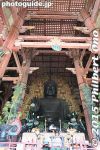
Oct 06, 2018
|
|
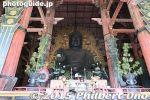
The Great Buddha in Nara is about 15 meters high.Oct 06, 2018
|
|
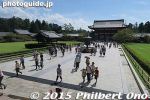
Oct 06, 2018
|
|
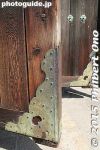
Oct 06, 2018
|
|

Oct 06, 2018
|
|
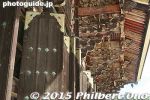
Oct 06, 2018
|
|
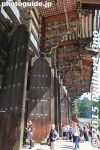
Oct 06, 2018
|
|
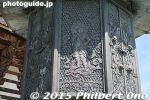
Oct 06, 2018
|
|
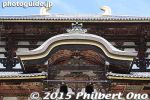
Oct 06, 2018
|
|
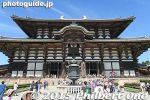
Oct 06, 2018
|
|
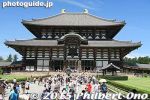
Todaiji Temple, NaraOct 06, 2018
|
|

Todaiji Temple, NaraOct 06, 2018
|
|
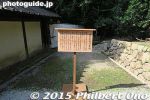
Sep 18, 2016
|
|
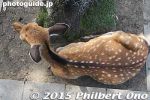
Deer is the sacred messenger of the shrine's gods.Sep 18, 2016
|
|
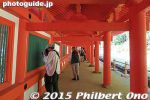
Sep 18, 2016
|
|
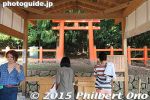
Sep 18, 2016
|
|
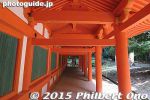
Sep 18, 2016
|
|
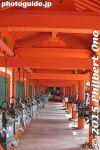
Sep 18, 2016
|
|
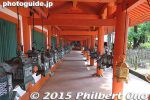
Sep 18, 2016
|
|
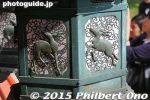
Deer on a bronze lantern atKasuga Taisha Shrine, Nara.Sep 18, 2016
|
|
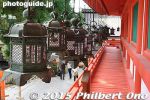
Sep 18, 2016
|
|
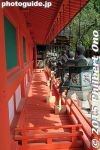
Sep 18, 2016
|
|
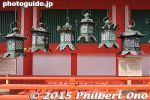
Kasuga Taisha Shrine is also noted for many bronze hanging lanterns.Sep 18, 2016
|
|
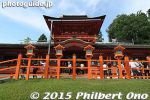
Kasuga Taisha Shrine bright vermillion color contrasts with the dark brown tones of nearby Buddhist temples.Sep 18, 2016
|
|
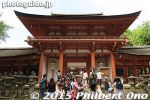
Minami-mon South Gate of Kasuga Taisha Shrine.Sep 18, 2016
|
|
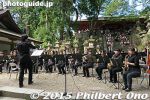
Free concert was held near the shrine's entrance when we went.Sep 18, 2016
|
|
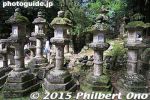
Stone lanterns leading to Kasuga Taisha Shrine.Sep 18, 2016
|
|
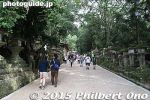
Long row of stone lanterns leading to the shrine is another hallmark of Kasuga Taisha Shrine.Sep 18, 2016
|
|
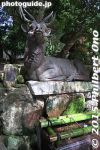
Deer is a trademark of Kasuga Taisha Shrine.Sep 18, 2016
|
|
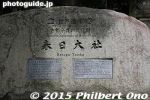
Sep 18, 2016
|
|

Kasuga Taisha Shrine is next to Nara Deer Park not far from Todaiji temple. Major attraction in Nara and one Japan's most famous Shinto shrines.Sep 18, 2016
|
|

Kasuga Taisha Shrine worships four deities. People can come to pray here for almost anything. Sep 18, 2016
|
|

My YouTube video of the Tempyo Procession (Part 1).Jun 06, 2010
|
|

My YouTube video of the Tempyo Procession (Part 2).Jun 06, 2010
|
|

My YouTube video of Sento-kun.Jun 06, 2010
|
|

My YouTube video of the Aoniyoshi Parade.Jun 06, 2010
|
|

Ad for Heijo-kyo 1300th anniversary in a train.May 30, 2010
|
|

Sento-kun at JR Nara Station.May 30, 2010
|
|

JR Nara StationMay 30, 2010
|
|

The Heijo Palace guard (Ejitai) holds the Gate-closing ceremony at the end of the day at Suzaku Gate.May 30, 2010
|
|

Inside JR Nara Station. Ceiling looks like a temple.May 30, 2010
|
|

The Palace guard completes its job and I caught the last shuttle bus back to Nara Station at 6 pm.May 30, 2010
|
|

May 30, 2010
|
|

They also open the gate doors every morning. The ceremony might be cancelled if it rains.May 30, 2010
|
|

The close the gate doors.May 30, 2010
|
|

May 30, 2010
|
|

This is the front of Suzaku Gate. Later they will go through the doors to the other side and close the doors. 朱雀門広場May 30, 2010
|
|

Lots of empty chairs went to waste.May 30, 2010
|
|

A lot of people sat.May 30, 2010
|
|

On stage, the Buddhist and Shinto priests held a prayer for peace. I didn't stick around for this.May 30, 2010
|
|

The Heijo Palace guard (Ejitai) holds the Gate-closing ceremony at the end of the day at Suzaku Gate at 5:10 pm. 衛士隊May 30, 2010
|
|

Heading for the stage.May 30, 2010
|
|

Because of this parade, I didn't have time to see everything at this site. Maybe next time, in which I case I shall update this page with more photos.May 30, 2010
|
|

May 30, 2010
|
|

May 30, 2010
|
|

May 30, 2010
|
|

Women Buddhist priests.May 30, 2010
|
|

May 30, 2010
|
|

There were many of them in Tempyo Procession, Nara Heijo-kyo.May 30, 2010
|
|

The end of the procession featured Buddhist priests of all sects.May 30, 2010
|
|

Mountain ascetic priests.May 30, 2010
|
|

May 30, 2010
|
|

May 30, 2010
|
|

KoreansMay 30, 2010
|
|

May 30, 2010
|
|

Korean womenMay 30, 2010
|
|

May 30, 2010
|
|

Korean contingent (drummers)May 30, 2010
|
|

Pretty little princessMay 30, 2010
|
|

May 30, 2010
|
|

May 30, 2010
|
|
|

Bird gigaku mask is quite famous.May 30, 2010
|
|

May 30, 2010
|
|

Hello!May 30, 2010
|
|

Sento-kun's cousins.May 30, 2010
|
|

May 30, 2010
|
|

May 30, 2010
|
|

Sacred musicMay 30, 2010
|
|

May 30, 2010
|
|

Biwa playerMay 30, 2010
|
|

May 30, 2010
|
|

May 30, 2010
|
|

May 30, 2010
|
|

May 30, 2010
|
|

May 30, 2010
|
|

May 30, 2010
|
|

May 30, 2010
|
|

May 30, 2010
|
|

May 30, 2010
|
|
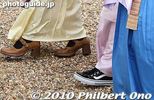
I finally realized what was wrong. Their footwear didn't match the period.May 30, 2010
|
|

May 30, 2010
|
|

May 30, 2010
|
|

May 30, 2010
|
|

May 30, 2010
|
|

May 30, 2010
|
|

May 30, 2010
|
|

May 30, 2010
|
|

May 30, 2010
|
|

Tempyo Procession, Nara Heijo-kyoMay 30, 2010
|
|

Gigaku performers performed during Buddhist ceremonies. Although it got quite popular, it eventually died out.May 30, 2010
|
|

Gigaku performer.May 30, 2010
|
|
|

Gigaku performers wore these large, wooden masks. These gigaku masks depict Chinese women. 伎楽May 30, 2010
|
|

These Gigaku performers ere played by Tenri University's Gagaku Club student members.May 30, 2010
|
|

There was an MC introducing the people in the parade, but there was a time lag. These people are Gigaku mime performers. It's now a lost art from the 7th-8th centuries.May 30, 2010
|
|

Unfortunately, they did not have any signs for each group of people in the parade so I can't identify who's who and what's what.May 30, 2010
|
|

On the day I went (May 9) during Golden Week, they held the Tempyo Gyoretsu Procession featuring 1,300 people in Tempyo (Tenpyo) Period (729-749) costumes.May 30, 2010
|
|

Directional sign in English.May 30, 2010
|
|

Azalea and Suzaku Gate.May 30, 2010
|
|

As you can see, the place is quite spread out. Be prepared to do some walking if you want to see things.May 30, 2010
|
|

This area is still being excavated so it's off limits.May 30, 2010
|
|

A strange sight.May 30, 2010
|
|

May 30, 2010
|
|

May 30, 2010
|
|

May 30, 2010
|
|

May 30, 2010
|
|

May 30, 2010
|
|

Flowers in spring.May 30, 2010
|
|

Eastern Palace GardenMay 30, 2010
|
|

Straight ahead is the entrance to the Eastern Palace Garden.May 30, 2010
|
|

Eastern Palace Garden 東院庭園広場May 30, 2010
|
|

That's why they have a tram. ハートフルトラムMay 30, 2010
|
|

The museums can be quite far apart within the Heijo-kyo site. Walking can be tiring.May 30, 2010
|
|

Flower arrangement for a Man'yoshu poem.May 30, 2010
|
|

This is not a restaurant. It's where you can try writing on wooden tablets. Inside the Hands-on Learning Center.May 30, 2010
|
|

May 30, 2010
|
|

Photo studio where you can dress up in Tempyo Period costumes and get your picture taken.May 30, 2010
|
|

Pottery workshopMay 30, 2010
|
|

Cooling mists at Hands-on Learning Center.May 30, 2010
|
|

At the Hands-on Learning Center, kids can try their hand at archeological digging in this sand box. They don't get to keep what they find. Reservations required.May 30, 2010
|
|

Hands-on Learning Center 体験楽習広場May 30, 2010
|
|

Desks for writing on mokkan wooden tablets since using paper was too precious in those days.May 30, 2010
|
|
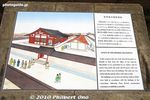
About the Office of the Imperial Household in English.May 30, 2010
|
|
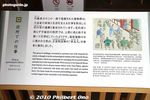
About the Office of the Imperial Household.May 30, 2010
|
|

Chairs and desks on a dirt floor.May 30, 2010
|
|

May 30, 2010
|
|

Office of the Imperial Household, a government agency looking after the Imperial family.May 30, 2010
|
|

Gate to the Office of the Imperial Household.May 30, 2010
|
|

May 30, 2010
|
|

May 30, 2010
|
|

PotteryMay 30, 2010
|
|

Roof tile pieces.May 30, 2010
|
|

May 30, 2010
|
|

Overlapping pillar holes. The hole was reused.May 30, 2010
|
|
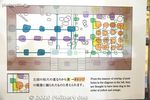
Layout of the excavated pillar holes.May 30, 2010
|
|

Pillar post holes which were excavated here. 遺構展示館May 30, 2010
|
|
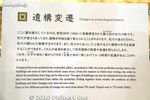
About the excavated pillar holes in English.May 30, 2010
|
|

Wooden wellMay 30, 2010
|
|

May 30, 2010
|
|

May 30, 2010
|
|

May 30, 2010
|
|
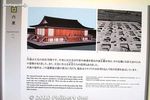
About the Imperial Domicile.May 30, 2010
|
|

Model of the Imperial Domicile.May 30, 2010
|
|

May 30, 2010
|
|

Display of a model of the emperor's residence (Imperial Domicile).May 30, 2010
|
|

Another museum you should see is this Excavation Site Exhibition Hall. Free admission. 遺構展示館May 30, 2010
|
|

About the Excavation Site Exhibition Hall in English.May 30, 2010
|
|

These pillar-like bushes indicate the location of pillars of buildings which existed in the Heijo Palace.May 30, 2010
|
|

View of Entrance Plaza from the ship. The museum (photography not allowed inside) has animated films and panel displays.May 30, 2010
|
|

These platforms are the site of old buildings.May 30, 2010
|
|

MastMay 30, 2010
|
|

Ship's rudderMay 30, 2010
|
|

The compartment toward the front was the envoy's quarters.May 30, 2010
|
|

May 30, 2010
|
|

May 30, 2010
|
|

May 30, 2010
|
|

Aboard the diplomatic ship to Tang China. It's pretty small.May 30, 2010
|
|

About the ship to China in English.May 30, 2010
|
|

When it's crowded (weekends, etc.), they require reservation tickets (seiriken) to enter the museum. The seiriken can be had near the museum. Museum admission is 500 yen, but free if you show a foreign passport..May 30, 2010
|
|

The Heijo-kyo History Museum includes a full-scale replica of the ship used to transport Japanese envoys to and from Tang China during the Nara Period. 平城京歴史館/遣唐使船復原展示May 30, 2010
|
|

The Heijo-kyo History Museum is near the Entrance Plaza. 平城京歴史館May 30, 2010
|
|

Daigokuden Hall as seen from Suzaku Gate.May 30, 2010
|
|

Front of Suzaku Gate.May 30, 2010
|
|

Suzaku Gate 朱雀門May 30, 2010
|
|

Suzaku Gate is the other prominent landmark at the Heijo-kyo site.May 30, 2010
|
|

Back of Suzaku Gate.May 30, 2010
|
|

Where to get a tour guide for foreigners. The guided tour is free if you show a foreign passport.May 30, 2010
|
|

Sento-kun also danced to his silly-sounding theme song. Also see my video at YouTube.May 30, 2010
|
|

Bus terminal at the Entrance Plaza. The free shuttle buses can take you to both JR and Kintetsu Nara Station.May 30, 2010
|
|

Next to the bus stop is the Entrance Plaza, the site's main entrance. The Food Court is here too, as well as souvenir shops. エントランス広場May 30, 2010
|
|

May 30, 2010
|
|

"Sento" means "Capital relocation" in this case, and not public bath. Japan's capital was relocated to Nara Heijo-kyo in 710, 1,300 years ago.May 30, 2010
|
|

Deer antlers on the head of a boy priest was funny. But he has proven to be a major hit among the masses and critics are silent now. The deer antlers come from the famous deer of Nara Park where they wander around with tourists.May 30, 2010
|
|

Sento-kun first made various poses for picture-taking by the audience. May 30, 2010
|
|

May 30, 2010
|
|

And here's Sento-kun, the official mascot of the 1300th anniversary of the Heijo-kyo Capital. When he was first introduced a few years ago, some people lambasted the design as insulting to priests.May 30, 2010
|
|

At the Mahoroba Stage, the Sento-kun show was held to a full house. (Standing room only.)May 30, 2010
|
|

Rest station. This place had cooling vapors as well. May 30, 2010
|
|

Flower maze.May 30, 2010
|
|

May 30, 2010
|
|

This Aoniyoshi Parade might be canceled in the event of rain.May 30, 2010
|
|

A maze of flowers. On the right in the background is the Mahoroba Stage.May 30, 2010
|
|
|

May 30, 2010
|
|

May 30, 2010
|
|

May 30, 2010
|
|

These pictures were taken in early May so the flower motif might change in later seasons.May 30, 2010
|
|

May 30, 2010
|
|

These two represent the many traders from China, Korea, and India doing business in Heijo-kyo.May 30, 2010
|
|

May 30, 2010
|
|

May 30, 2010
|
|

May 30, 2010
|
|

This is in front of the South Gate.May 30, 2010
|
|

Aoniyoshi Parade at Heijo-kyo, NaraMay 30, 2010
|
|

Buddhist priests in the Aoniyoshi Parade.May 30, 2010
|
|

May 30, 2010
|
|

Aoni-yoshi Parade is a great photo op.May 30, 2010
|
|

May 30, 2010
|
|

May 30, 2010
|
|

The Aoniyoshi Parade reflects the Tempyo Period when Japan held exchanges with foreign cultures and when Buddhism was introduced to Japan.May 30, 2010
|
|

Twice a day, the colorful Aoni-yoshi Parade is held for 30 min. in front of the South Gate. 平城遷都1300年祭 あをによしパレーMay 30, 2010
|
|

May 30, 2010
|
|

衛士隊の再現(南門広場)May 30, 2010
|
|

A few of the guards were female.May 30, 2010
|
|

At 1 pm in front of the South Gate, the Heijo Palace guards (Ejitai) reenact a guard routine. They appear three times a day. 衛士隊May 30, 2010
|
|

May 30, 2010
|
|

The plaza in front of the Former Imperial Audience Hall is quite large.May 30, 2010
|
|

May 30, 2010
|
|

May 30, 2010
|
|

Former Imperial Audience Hall.May 30, 2010
|
|

Daigokuden Former Imperial Audience Hall, Heijo-kyo, NaraMay 30, 2010
|
|

May 30, 2010
|
|

If there's something you have to see here, it's this building.May 30, 2010
|
|

May 30, 2010
|
|

Roof edges of Daigokuden Hall.May 30, 2010
|
|

Exit of Daigokuden Hall.May 30, 2010
|
|

Roof edges.May 30, 2010
|
|

On the railing are decorative jewel balls in different colors. May 30, 2010
|
|

Metal fitting and ornament on balcony railing and decorative jewel ball in blue. May 30, 2010
|
|

Balcony railing.May 30, 2010
|
|

Metal fittings on a door.May 30, 2010
|
|
|
|